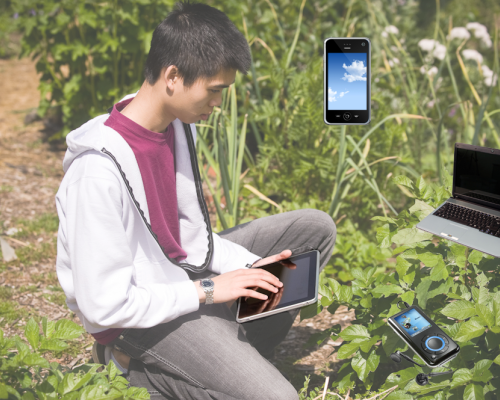BYOT: A Useful Model for Tech Integration?
Date
An educational trend that is gaining momentum among school districts across the United States is BYOT: Bring Your Own Technology. This type of program allows students to bring their own mobile devices to school- everything from iPads to iPhones. Instead of confiscating prohibited electronics, like the Nintendo 3DS, teachers are embracing the potential that these devices hold for students’ learning.
I recently spoke with a friend of mine who has a son entering middle school next year. She received a letter outlining the electronic devices that students are encouraged to bring to school. On the list: iPads, netbooks, tablets, smartphones, Kindle Fires, and gaming devices. Her son’s reaction was an enthusiastic, “Yeeeesssss!” Her initial reaction was, “No way!” I can understand where she’s coming from- electronics are expensive, and the last thing you want to do is send a pricey piece of equipment to school with your son who still loses 3 coats every winter. Not to mention the potential for off-task behavior and cyber bullying that comes along with text messages and access to social networking sites. In fact, access to non-school networks without the protection of Internet filters is a major concern when implementing a BYOT program. It takes collaboration and commitment from teachers, parents, and students to follow safe use guidelines. It also takes a bit of trust. But with firm guidelines and regulations in place, do the benefits outweigh the difficulties?
Like all trends, this one must be carefully balanced with research-based teaching practices and pedagogy. It’s not what technology devices students are using but how they are using them. And if your tech-savvy district is on board with BYOT, like my friend’s district, take a deep breath and consider some of the benefits:
Technology Funding
With shrinking school budgets and program cuts, districts are looking towards creative ways of funding technology initiatives. The BYOT model accomplishes the goal of classroom technology integration without having to cut funding from other deserving programs or finance substantial loans. If the end goal is for students to take advantage of what mobile devices have to offer, does it really matter where the devices come from?
Student Engagement
If students don’t buy-in to the learning, then it’s never going to happen. At best, the learning will be short-term unless students are truly engaged and intrinsically motivated to learn the material. If technology is what captures students’ attention, and they already own the device, then this becomes a very useful tool for engaging them in learning.
Shifting the Teacher Role
I really like a quote that I recently read online, said by a teacher who implemented a BYOT program in her classroom: “I thought my role was to give them all the knowledge that I’ve got about something and use that textbook and my knowledge together. Now I realize that’s not my job at all. My job is to facilitate them. My job is to point them in the right direction, give them the tools they need and — wow — they can do so much more.”
Real-World Application
As adults, we rely on mobile devices every day- for almost anything. Personally, I know that I would be lost (literally) without the GPS on my smartphone. And my iPad is never more than a few feet away from me! When we need information, we don’t ask just one person or consult one textbook. We go straight to the source and get information from multiple experts. Allowing students to use their personal electronic devices for real-world application is a lifelong learning skill.
I think the BYOT model for technology integration is a step in the right direction. I’m excited to see how this trend develops and how it effects learning outcomes in our schools.

